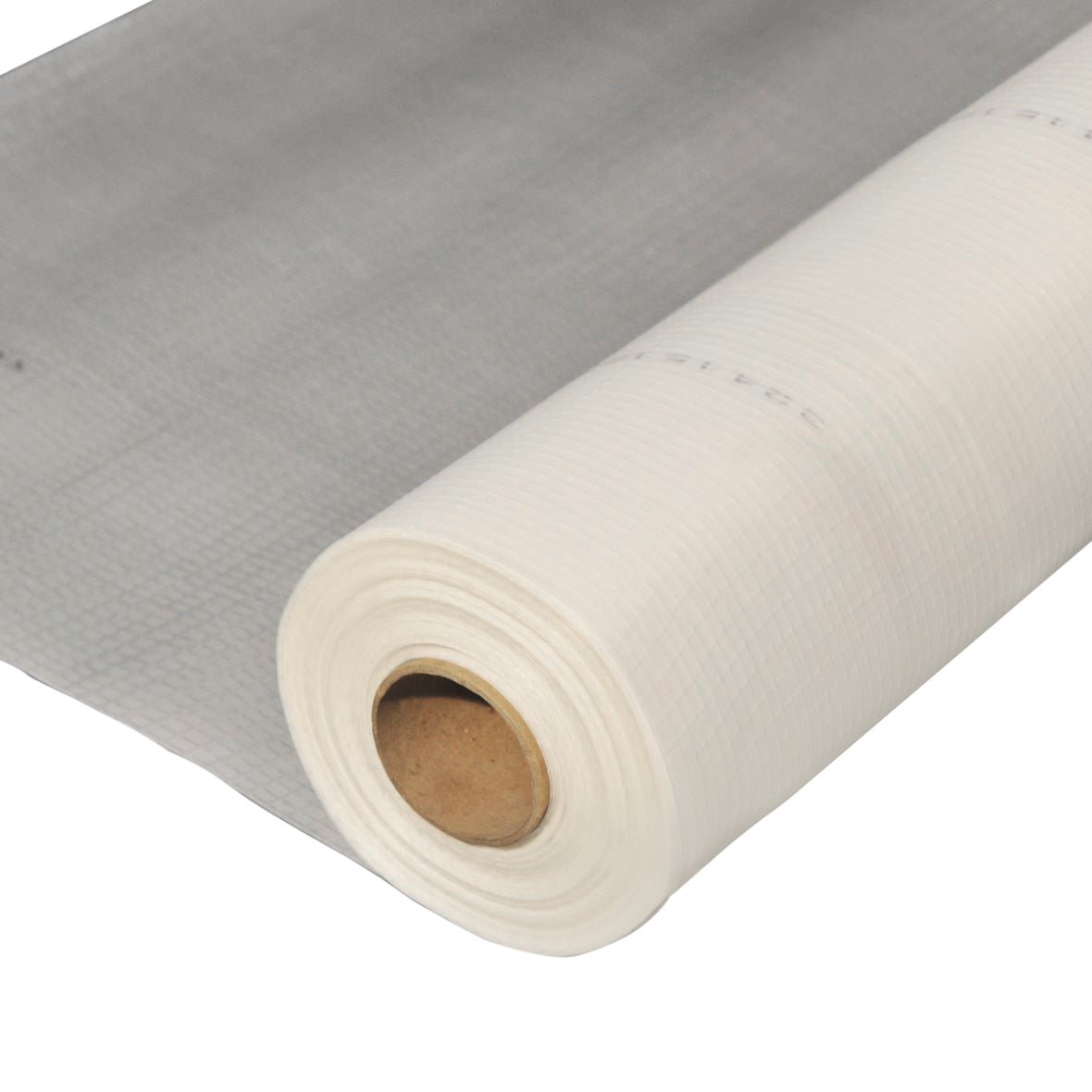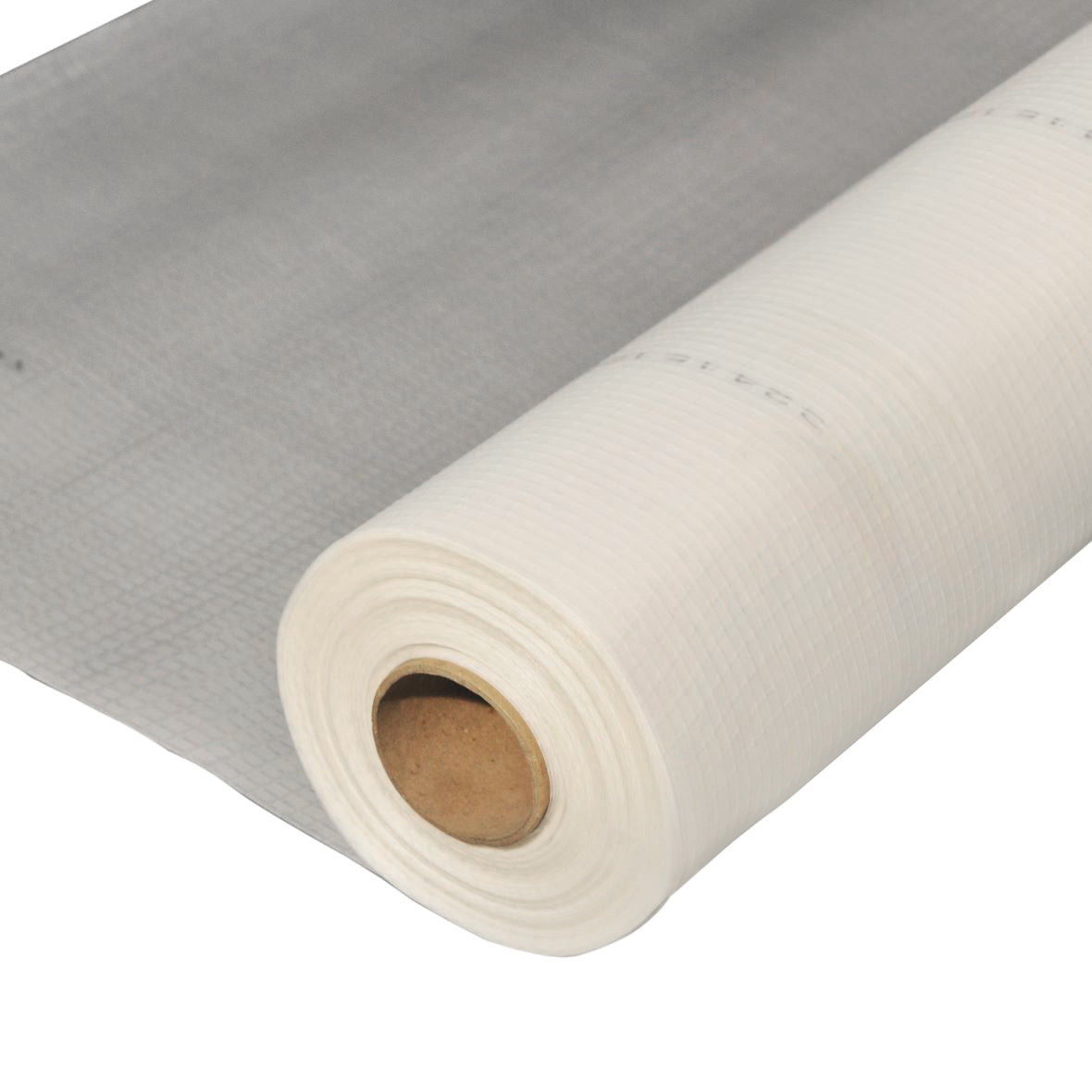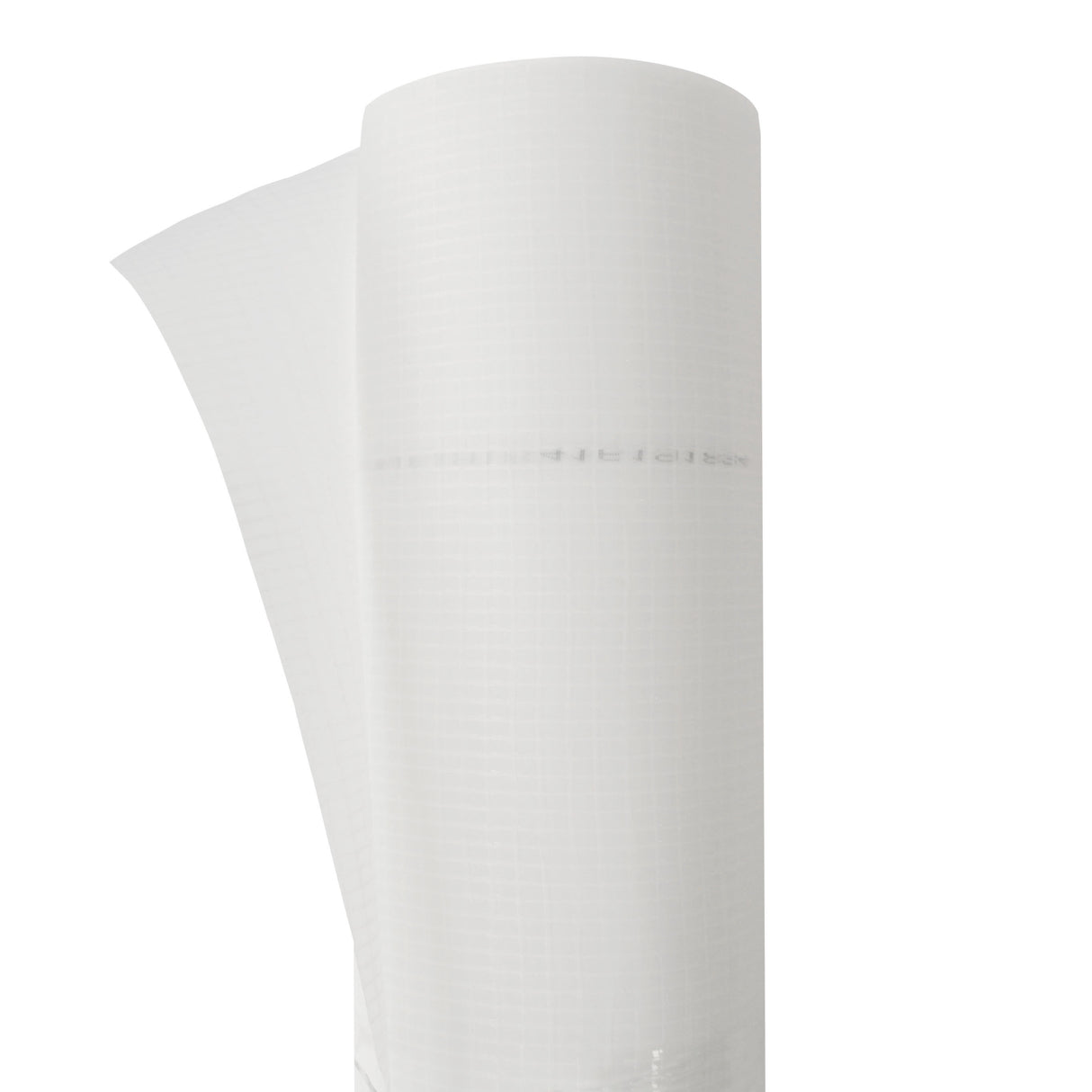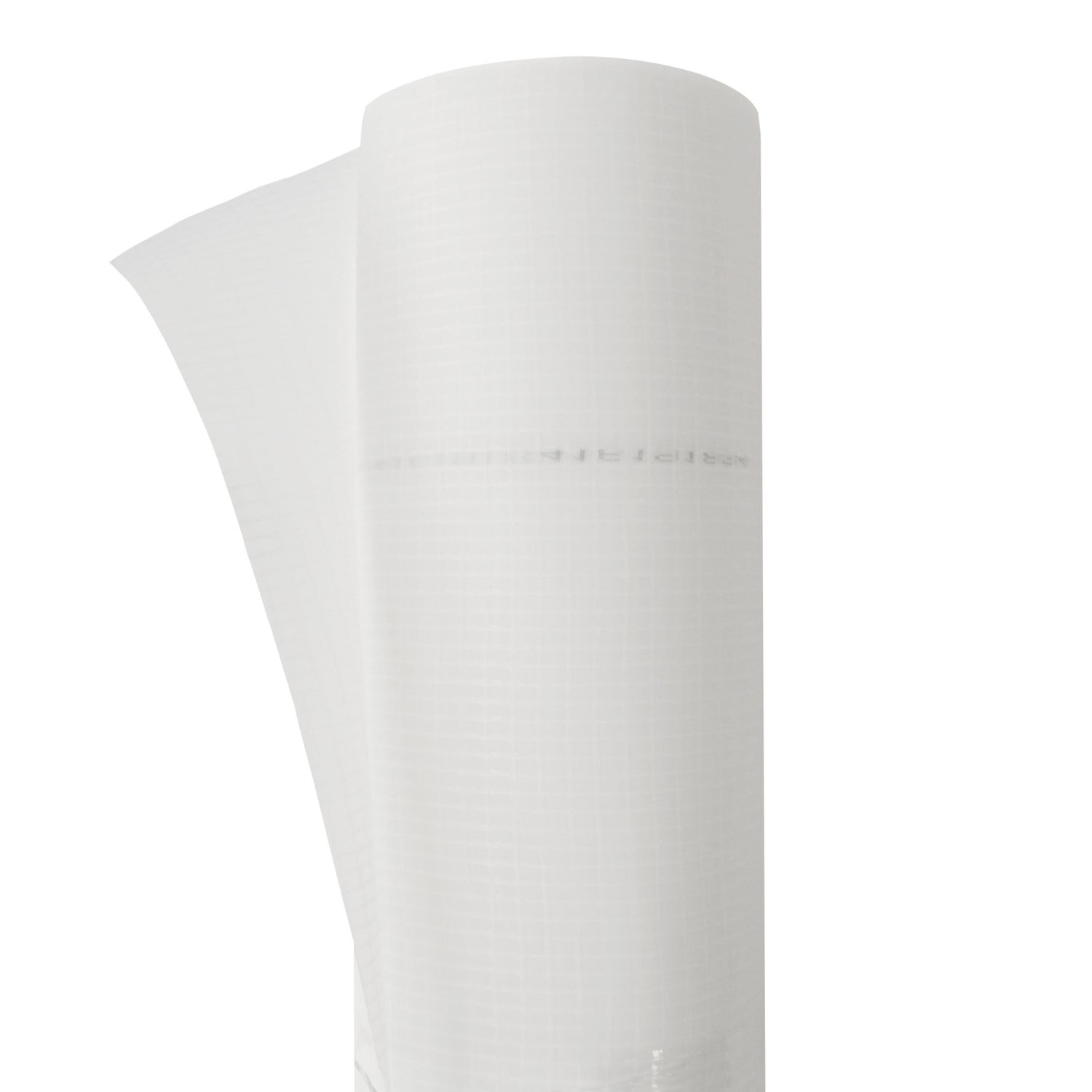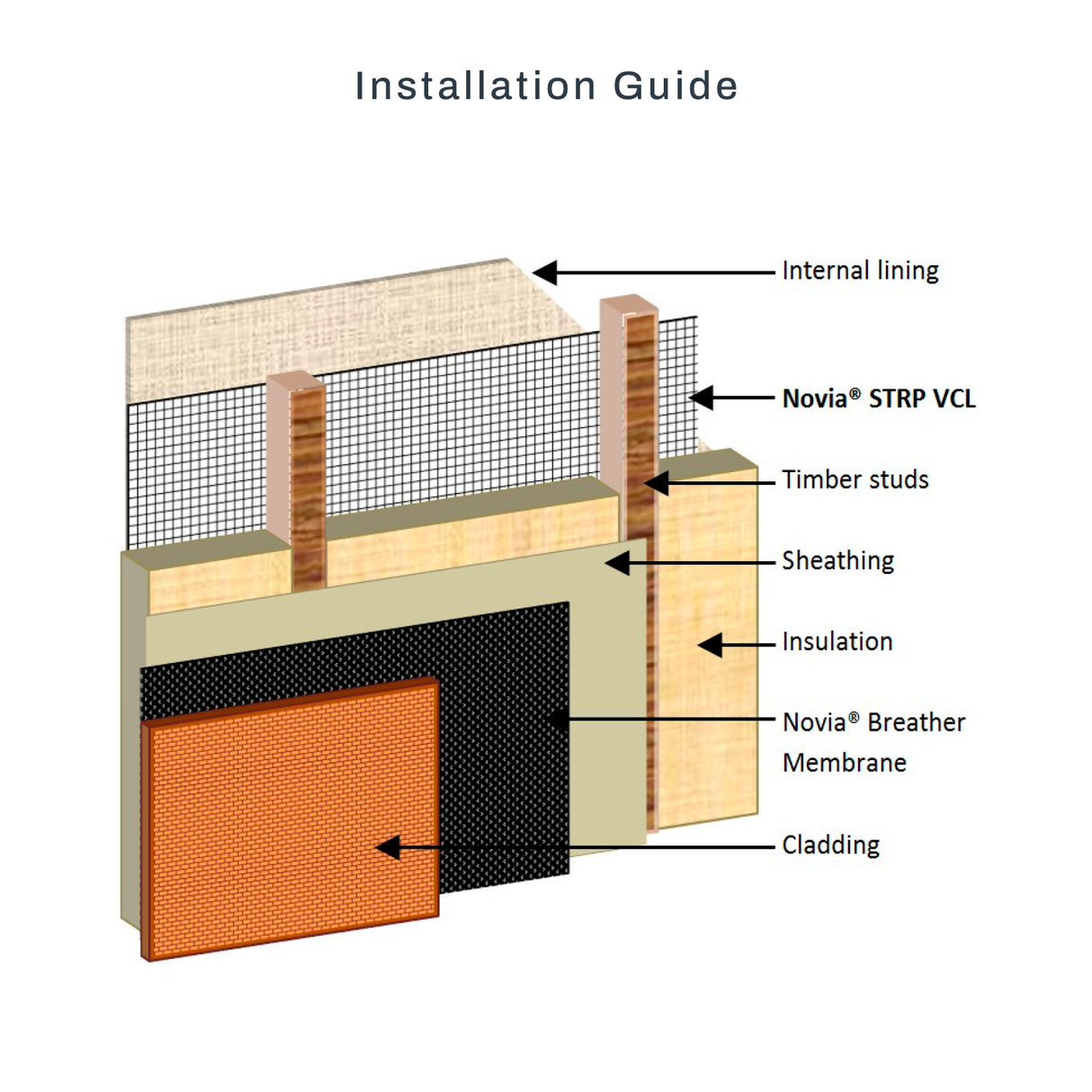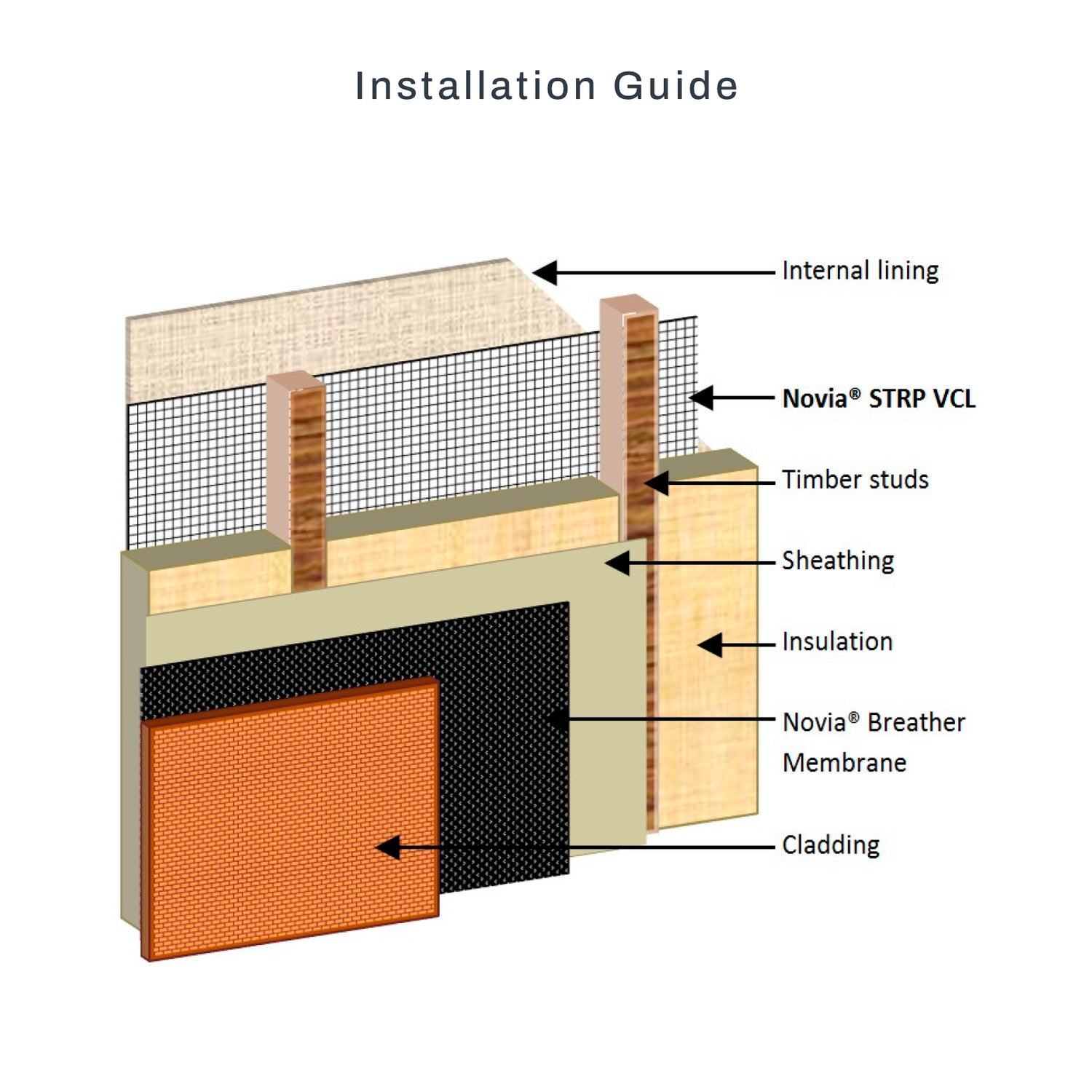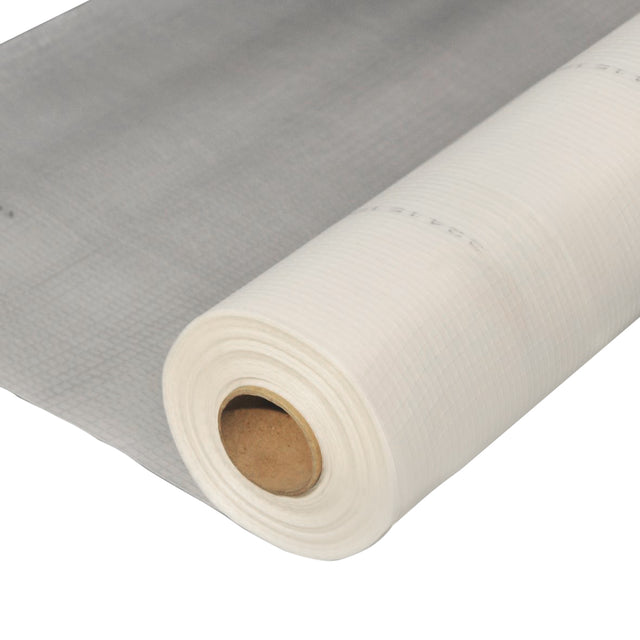Novia STRP Reinforced Vapour Control Layer 2m x 50m 100m²
Novia STRP Reinforced Vapour Control Layer 2m x 50m 100m² is backordered and will ship as soon as it is back in stock.
The Novia STRP (Super Tough Reinforced Polythene) is a high-spec, reinforced and laminated vapour control layer (VCL) membrane designed for use in insulated walls, floors and roofing. It is reinforced, making it tough and tear-resistant, and includes flame-resistant additives. The Novia STRP is particularly ideal for metal profile-clad industrial buildings.
Install on the “warm” (interior) side of your structure and pair with external breather membranes for the “cold” side. Secure with Novia tapes for a secure finish.
- Supplied unfolded, in rolls
- Suitable for use in commercial cladding systems
- Translucent, reinforced and tear-resistant
- 2m wide
- CE Approved and CPR Compliant
- Complies with BS EN 13984
- Improves insulation performance
| 0.2g/m²*d |
| Novia STRP Polythene VCL Data Sheet |
-
Size
-
Coverage (m²)
-
Thickness
-
Length50m
-
Width2m
-
Material
Large Order or Specific Requirement?
CALL OUR TEAM
0115 6976 800

